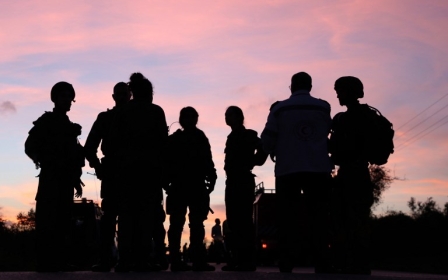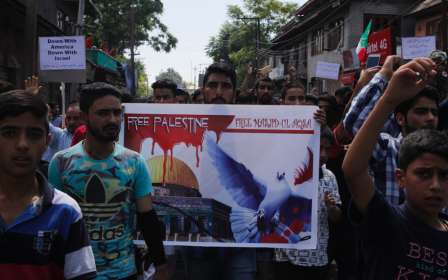Palestinian teen shot by Israeli forces dies from injuries in Ramallah

A Palestinian teenager shot by Israeli forces in last week's Nakba day protests in the Occupied West Bank died from his wounds on Wednesday, the Palestinian health ministry said.
Uday Abu Khalil, 15, was shot at the entrance of Al-Bireh, north of Ramallah in the West Bank, the ministry said in a statement.
The health ministry did not confirm when the teen sustained his injury, but the official Palestinian news agency WAFA said Khalil was shot in the stomach on 16 May.
Major protests took place across the Palestinian territories that Wednesday as the United States transferred its Israeli embassy to Jerusalem from Tel Aviv.
Smaller protests took place on Thursday, the 70th anniversary of the Nakba, or catastrophe, when hundreds of thousands of Palestinians fled their land during the 1948 Palestine war.
More than 60 Palestinians were killed along the Gaza border over two days, but the teen who died on Wednesday was the first killed in West Bank protests. More than 2,770 others were injured, including 225 children and 86 women.
The casualties raised the death toll since 30 March, the day when the six-week Gaza "Great March of Reurn" began, to 119, in addition to roughly 12,000 injuries.
The Israeli army insists its actions are necessary to defend the border and prevent mass infiltrations.
It accuses Hamas of using the demonstrations to approach and damage the border fence, including laying explosive devices and attacking soldiers.
Palestinians see the eastern part of Jerusalem as their capital and the embassy move led the Palestinian leadership to cut ties with US President Donald Trump's administration.
Middle East Eye propose une couverture et une analyse indépendantes et incomparables du Moyen-Orient, de l’Afrique du Nord et d’autres régions du monde. Pour en savoir plus sur la reprise de ce contenu et les frais qui s’appliquent, veuillez remplir ce formulaire [en anglais]. Pour en savoir plus sur MEE, cliquez ici [en anglais].




